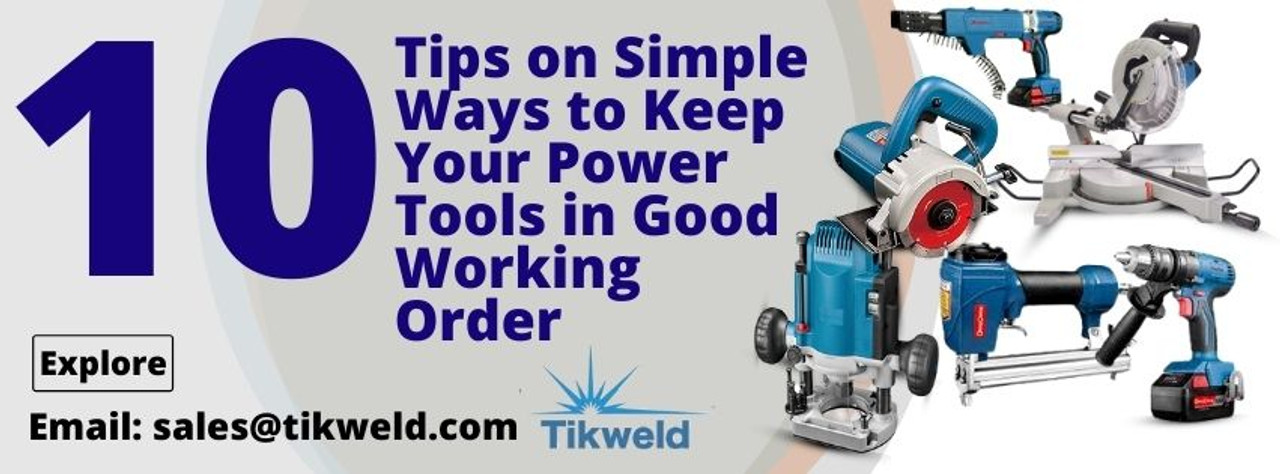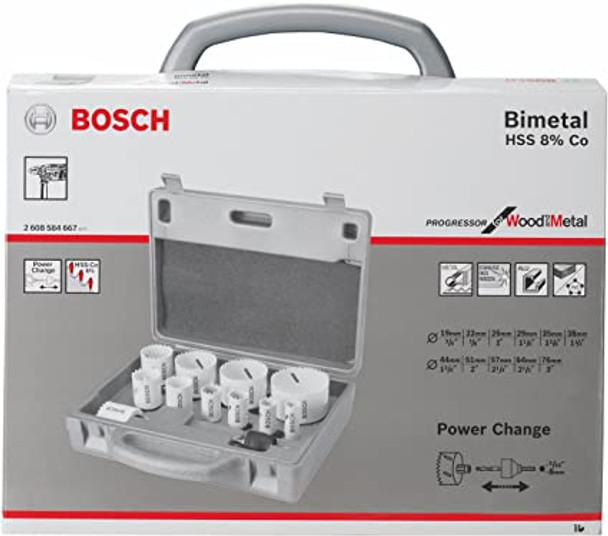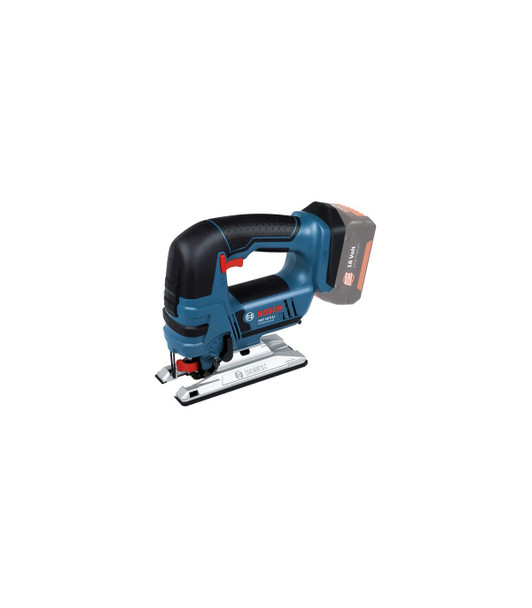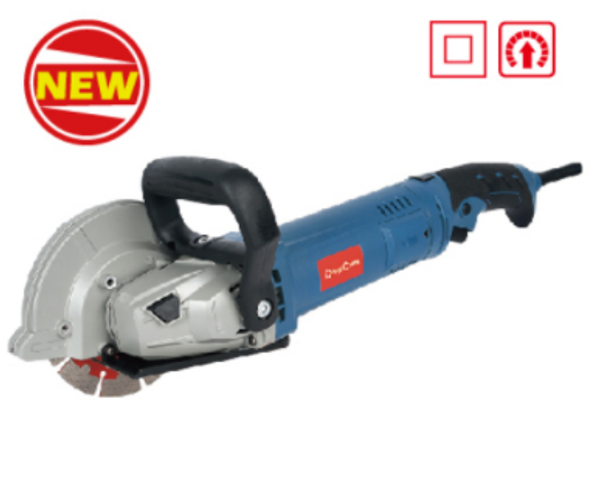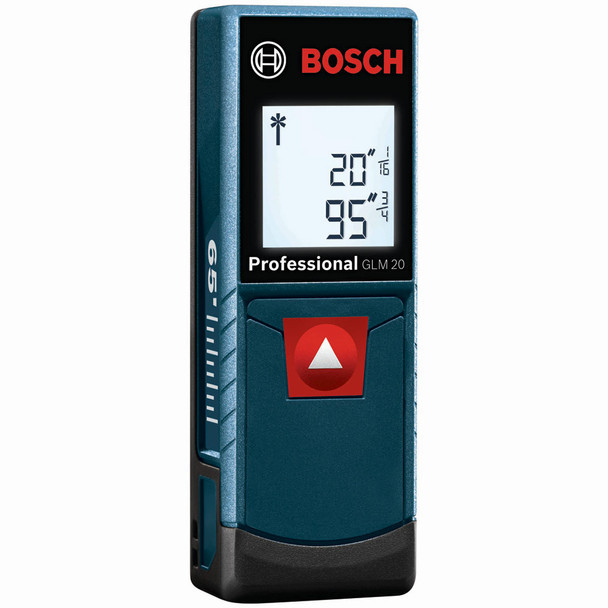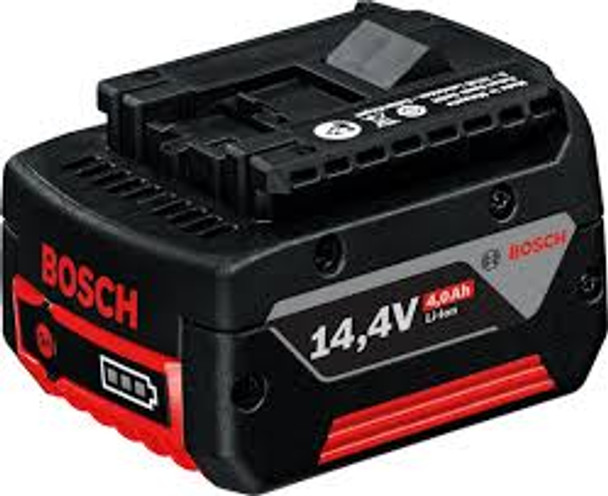10 Tips on Simple Ways to Keep Your Power Tools in Good Working Order
Your power tools are precious and essential. They are why you can do your job the way you must. If you take good care of them, they will last longer and be there for another day. This tool maintenance knowledge is key to protecting your investment. Understanding how to care for your tools properly will give years of service and make tasks more straightforward for you to finish. Make sure to stay on top of your power tool maintenance practices by first taking care of these basics. Our team has compiled ten tips on simple ways to keep your power tools in good working order for years.
Bosch Progressor Hole saws, 14-piece set, Ø 19-76 mm 2608584667
Don't allow your power tools to overheat.
Working a tool too hard will make it much less efficient. That's because a tool's motor generates a lot of heat when it works to counteract friction from its components. This extra force that your machine exerts on the material you are attempting to work through makes the tool's temperature rise - more so with some materials, like wood or steel. So be sure not to operate your power tools for too long since they can overheat and wear out very quickly if you don't give them adequate time to cool down.
Mandatory Regular cleaning of your tools
Power tools require regular maintenance. They can get filled with dust particles over time, which could harm your work when you're using these machines of making holes in wood or metal, for example, as each time you use it, the more the flow of air is sucked into those dusty vents becomes. Instead of trying to blast out the vents with compressed air or water, they may be pushed further into the machine and affect airflow even more. The best way to prevent this is to make sure that you clean your power tool properly after taking it apart at the end of every shift. It's recommended that you wipe down all surfaces surrounding the drill to remove any dirt effectively.
Bosch Cordless Jigsaw GST 18 V-LI
Lubricate Your tools regularly.
Keeping your device lubricated helps keep it free from wear and tear. Lubrication helps keep the parts of your power tools in working order by keeping them free of wear and tear. Check your tool's maintenance section of the owner's manual for the recommended methods of lubrication and the type of lubricant you should use.
Sharpen your bits and blades
Tools accessories such as drills, blades, and stones are necessary for a power tool to work; hence, we must keep them in excellent condition. It is essential to use new and sharp tools to work with for the best efficiency. An old or used bit will require you to exert extra effort for cutting and shaping. It also means that the motor is working harder and getting hot. It can also shorten the life of the drill bit and damage it. Likewise, it is also crucial that you use the right tool for your working material.
DongCheng Groove Cutter DZR135
Inspect tools upon usage.
Ensure you inspect your tools during and after use to check for obvious signs of wear, such as a hole in the handle or a warped or otherwise damaged blade. If devices are showing signs of damage, repair them immediately. Scrubbing hard surfaces with wire brush material, washing the areas down with warm, soapy water, and drying them off with a dry or damp rag is the process of cleaning the wood. When you use tools, it's best to wear heavy gloves with thick, long sleeves and safety glasses.
Before you use any tool, check the handles of the tools for any splinters, breaks, or cracks. Clean corroded metal tools, sharpen bladed tools once every season. It would help if you cleaned your tools regularly to eliminate dirt and debris, so they are always sharp, and power cords shouldn't be frayed and should not have any loose connections that might cause electric shock or fire.
Calibrate all your tools promptly.
Calibration determines and documents the difference in readings given by a tool compared with what is provided by a measuring standard (a fixed device known to be accurate). Calibration is generally followed by adjusting the means to get correct readings. Power tools also need regular calibration as advised by the manufacturers because they are precision instruments. They use a lot of moving parts that need to remain in alignment. The tool maintenance schedule in your user's manual will outline when you should calibrate your tool, usually after a specified amount of use hours. Most tool companies offer calibration services for their products.
Bosch GLM 20 Professional measuring laser
Store your tools properly.
Keeping power tools in a damp environment can create problems with the electricity and electrical components, cause corrosion to the devices by causing rust, and cause power tools to break down or give up altogether. Power tools need to be stored in a safe, clean place.
Keep your tool optimal by replacing worn parts.
With continued use, the tool is prone to wearing out components. One of these is an electrical current component. Because the brush mechanism conducts electricity, it gets worn out over time. Another one is a power cord or belt of a tool. If the belt gets old, it can break. Another is a switch assembly. It can malfunction if the switch wears out or gets knocked off its position by an impact.
Care for your battery-powered tools
A lithium-ion (Li-ion) battery is typically the current standard for power tools. You must manage the heat that develops with this lithium-ion battery. It should be kept where the temperature does not exceed 85°F or be stored where high humidity will not cause the battery to overheat. Never allow the lithium-ion battery to run entirely down before recharging.
Daily maintenance of tools can prevent problems, such as repairing them. Taking simple precautions such as ensuring their temperature is at the correct level, and their lubrication is maintained can increase their lifespan. Also, keeping tools clean from built-up dust can help them run more smoothly.
Bosch 14.4V battery pack 4.0Ah li-ion
Put Power tools management system in place.
There will always be a need for skilled workers to repair and maintain power tools in your workshop. Suppose you do not have these people on hand within your organization. You will have to make a few decisions before you can begin power tool maintenance. Is your shop or area ready for the added responsibility? Who's going to take care of it? How will they be paid? What do they need to fix, replace and maintain? And most importantly, how much storage space and open wall area will there be for your tools? Creating a power tools management system that records tools use and maintenance history will be a great addition to the management of your workshop and, most importantly, the overall life of your tools.
In conclusion, if you want to keep your power tools in good condition and like new ones, you will need to follow the advice in the above article. We are always excited when one of our posts can provide helpful information on this topic. We hope you enjoyed our blog post about why you should maintain and repair your power tools—keeping your power tools functional is not a difficult task, but doing so is always beneficial. By maintaining your power tools, You are avoiding hazards and saving money, but you are also keeping them at their best. Therefore they will give you the most enjoyable experience when using them. Thank you for reading. If you have any questions or concerns, don't hesitate to get in touch with us anytime.
Frequently Asked Questions
Q1 What is required for arc welding?
A- For the arc welding, the temperature of the arc should be 3500° C. At this temperature, mechanical pressure for melting is not required. Both AC and DC can be used in arc welding. Arc welding usually requires high current (over 80 amperes) and it may need around 12000 amperes in spot welding.
Q2 What is PPE in welding?
Welding PPE: What Is It? The personal protective equipment, or PPE, that welders wear is a collection of safety gear. They are meant to shield workers from potential damage while they perform their duties, hence they must be worn during operations.
Q3 What is the biggest danger when welding?
The most immediate and dangerous risk for a welder is electrocution. Abrupt electrical discharge into the human body can result in fatalities or major injuries. By taking these simple safety measures, the risk of electrocution during welding can be reduced
Related Articles
12 essential welding equipment for fabrication work
An Overview of Different Types of Arc Welding Machines
A Comprehensive Guide to TIG Welding and TIG Welding Machines

